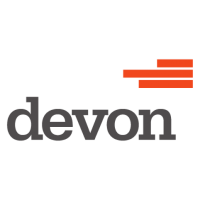
Melexis NV
XBRU:MELE

Earnings Call Analysis
 Q4-2023 Analysis
Melexis NV
Q4-2023 Analysis
Melexis NV
Parsing the executives' dialogue, the company envisions a realistic 10% growth rate despite electrification's slower-than-expected rise, which is contributing new customers and applications. This projected growth is considered in line with long-term expectations. However, disentangling the effects of market growth from inventory adjustments appears challenging. The executive team admitted difficulties in quantifying the impact of inventory corrections on growth, signaling uncertainty in the market.
Despite an observable increase in the company's inventory, largely driven by an anticipated Q1 sales slump and continued material intake over the holidays, there's confidence in the second half of the year outpacing the first. This buildup in inventory includes a mix of constrained modern products that are immune to inventory corrections, contrasting with surplus in less modern products that faced corrections. The company shows a proactive stance in managing inventory, highlighting preparation for fulfilling future demand.
The company discusses sales through Long Term Agreements (LTAs), which cover about half their business, where price points are less subject to negotiation compared to volume and product mix. This suggests a strategic focus on delivery and fulfillment over price competition. Moreover, the execs acknowledged very low single-digit price pressure but emphasized more or less stable pricing within LTAs, underscoring a measure of predictability and firm control over pricing strategy despite external market pressures.




























 You don't have any saved screeners yet
You don't have any saved screeners yet

Good day, and welcome to today's Melexis Full Year 2023 Results Conference Call. This meeting is being recorded.
At this time, I'd like to hand the call over to Mr. Marc Biron, CEO. Please go ahead, sir.
Thank you. Dear audience, thank you for joining the Melexis Fourth Quarter and Full Year 2023 Earnings Call.
Together with Karen Van Griensven, our CFO, I will go back -- I will look back on the past year and I will give some light on the year to come.
In the fourth quarter of '23, sales came out at EUR 250.5 million, up 12% compared with the fourth quarter of '22. For the full year, sales grew by 15% compared with '22. The outperforming product line were current sensors for powertrain application, but also embedded motor drivers and pressure sensors, which are agnostic to the powertrain.
Product launches in '23 addressed both the automotive and the nonautomotive industry. Automotive product launch included current sensors for power sensing application for the EV vehicle and an inductive sensor used in automotive pedal and automotive steering applications.
Beyond automotive, we launched a magnetic switch suitable for IoT, industrial and white goods application. We have also launched a Triaxis magnetometer, which is mainly intended for joysticks and other similar human machine interface applications.
Looking at '24, we expect sales to land at around EUR 1 billion. Uncertainties in the market and some inventory correction impact our short-term results. However, many of our customers expect an increased business in the second half of '24.
Moreover, design win intake has been very strong since a few years now, and our innovation team is delivering many promising and unique products. I can give some example as the tactile sensor, we are working on this tactile sensor. We are also working on the new generation of our temperature sensors. We are also deploying an impressive road map for our lighting products as well as for our drivers that are used in actuators.
At our Capital Markets Day in November '23, we presented our strategy and target for the next 7 years. In the automotive business, we aim to grow at 10% CAGR, thanks to innovative solution for powertrain, thermal management, battery, e-braking, steering and lighting applications.
Beyond automotive, we will expand our presence with 4 emerging product lines: sustainable world, alternative mobility, robotic and digital health. We aim for 15% or higher annual sales growth on those areas.
To execute the strategy, we are working on a cultural transformation, stimulating more autonomy, more entrepreneurial mindset and a faster decision-making.
I'll now give the floor to our CFO, Karen Van Griensven, for some more financial information.
Thank you, Marc. Hello, everybody. So yes, the sales of the full year 2023 were around EUR 964.3 million, an increase of 15% compared to the previous year. And the euro-U.S. dollar exchange rate evolution had a negative impact of 1% on sales compared to 2022.
The operating result was EUR 261.3 million or 27.1% of sales, an increase of 15% compared to EUR 226.5 million in 2022. The net result was EUR 209.5 million or EUR 5.18 per share, an increase of 6% compared to EUR 197.2 million or EUR 4.88 per share in 2022.
For the fourth quarter of 2023, we were at EUR 250.5 million, an increase of 12% compared to the same quarter of the previous year and an increase of 1% compared to the previous quarter. The euro-U.S. dollar exchange rate evolution had a negative impact 2% of sales compared to the same quarter of last year and a negative impact of 1% on sales compared to the previous quarter.
The gross result was EUR 111.7 million or 44.6% of sales, an increase of 12% compared to the same quarter of last year and a decrease of 2% compared to the previous quarter.
R&D expenses were 11.9% of sales, G&A was at 5.7% of sales and selling was at 2.4% of sales.
The operating result was EUR 61.5 million or 24.6% of sales, an increase of 6% compared to the same quarter of last year and a decrease of 13% compared to the previous quarter.
The net result was EUR 49.8 million or EUR 1.23 per share, a decrease of 4% compared to EUR 52.2 million or EUR 1.29 per share in the fourth quarter of 2022 and a decrease of 12% compared to the previous quarter.
The Board of Directors also approved on February 5, 2024, to propose to the Annual Shareholders' Meeting to pay out over the result of 2023 a total dividend of EUR 3.70 gross per share. This amount contains an interim dividend of EUR 1.30 per share, which was paid in October '23 and a final dividend of EUR 2.4 per share, which will be payable after approval of the Annual Shareholders' Meeting.
The Melexis shares will start rating ex coupon on May 15, 2024.
A bit more on the outlook. So Marc already mentioned it. For the full year, we expect to have sales around EUR 1 billion. Now for the first quarter of 2024, we expect sales in the range of EUR 240 million to EUR 245 million.
For the full year, we expect a gross profit margin of around 44% and an operating margin above 25%, all taking into account a euro-U.S. dollar exchange rate of 1.08.
For the full year, we also expect CapEx to be around EUR 70 million.
With this, I would like to end this part and open the Q&A session. So operator, please go ahead.
[Operator Instructions] First question comes from Francois Bouvignies from UBS.
I have a couple, if I may. The first one is basically the question we have to all auto semis and auto-exposed names. You are talking about short-term inventory correction impacting your business, but yet you are still guiding for 5% growth next quarter.
If you look at the full year, so you are still growing low single-digit percentage, which many would argue, it doesn't imply a significant inventory correction as such. Especially after the base, the inventory buildup that we saw in the last year, at least you should bring like a significant base effect, and therefore, the correction could be even more.
Now if you look at the history, in '19, you had an inventory correction, you had double-digit percentage decline. And now you are just guiding a very, very mild inventory correction as such.
So what makes you confident? I mean, do you think it's conservative enough to have such a mild down cycle? Or what's the risk do you see basically that you could see a further correction than what you are seeing? Do you see what I mean?
Yes. I think we understand very well what you mean, indeed. There are, I'd say, 2 main facts that go in the direction of, as you say, the mild correction. Yes, first of all, we have discussed with -- we have made a survey, let's say, with our main customer, okay, the 24 biggest customers. And the majority of those customers believe that H2 will be better than H1.
And on the other hand, when we look at the inventory of our distributor, we see that the inventory is going down quite a while. It means we believe that, at one point in time, at least the distributor will need to order again. And we see that the inventory is going down and the point of sale is going up. And those are, I would say, the 2 main reasons why we are optimistic.
Okay. On the margin side, the full year guide implies that the gross margin is lower despite a growth that you expect. Can you explain what are the drivers of lower margins for 2024 versus '23?
Well, we keep investing in capacity, in people while we -- so we will have overall cost increase in '24 versus '23 while we have some sales growth, but it's insufficient to compensate the cost increase because we believe in the long-term growth of Melexis. And so we keep investing.
Understood.
Longer term, of course, we aim for 45%-plus, but we see '24 as a transitional year. We are working on cost improvements like cost of yield is an important one. We have ramp-up of quite some products, so cost of yield can further improve. Cost of tests, we are working on. We are also working with suppliers on a cost improvement road map. So -- but in '24, yes, we invest in the future.
Understood. And you mentioned in the note -- I mean, in your report that you have initiated an organizational update to foster innovation, optimization and that it impacted Q4. Can you elaborate on this project? I mean, what -- because if you mentioned it, it means that it must be material. I mean, so what is going on exactly here?
Yes. It's part of the increase we saw in operational expenses in Q4 versus Q3. And through this update, we will reduce our operational costs again in Q4. But as I -- in Q1 '24, we see a drop in operational expenses. But as I mentioned, we keep also investing in skills -- in people skills, in new skills and also in equipment. So throughout the year, we'll see operational costs move up again gradually. So overall, we still expect an operational cost increase for '24 versus '23. But in Q1 level, we have dropped.
Yes. And what's the strategic project specifically? I mean, any specific products or specific -- or just across the board?
It's an update. There are nuances in our strategy that are changing on a -- it's good to, once in a while, indeed, review your full organization and adapted to the new reality.
Yes. Perhaps to complement what Karen mentioned. If I can make reference to the Capital Markets Day where we have, indeed, announced that we are creating, what we call, for emerging product line mainly addressing adjacent application. And then we mentioned robotic, digital health, sustainable world and alternative mobility.
And indeed, in the budget of '24, we have -- we are planning -- or we are recruiting people in order to work on those 4 emerging product line in order to, yes, first, listen to the market, define the requirement for the new product and then develop the new product to address those applications. This is one of example of strategic projects that we have launched.
We will now take our next question from Ruben Devos from Kepler Chevreux.
Just 2 questions, the first one related to design wins. Could you maybe talk about the rate of design wins in '23 and how that compared to '22. I believe the aim used to be for 15 to 20 new products annually. So first, could you execute on these design wins typically? Is that a material contributor 2 years down the road? And maybe how reliant are you on supplier responsiveness to execute on these design wins? That's the first question.
The design wins in '23 almost -- and when I say almost, it's 2%, 3% below the design win of '22. And the design win of '22 was extremely high. it was extremely high in '22 probably, let's say, driven by all the allocation problems that have pushed the customer to make design win to show the importance of themselves. And '22 was really a very, very high design win year.
And in '23, which was a more normal year, we have almost a repeat. It's the same record, which is, I think, a very, very impressive and very important success. As you know, to transform, let's say, those design wins in revenue, we need, let's say, 1 year, 18 months extra because there is all the ramp-up of the volume. But in terms of design win, yes, '23 was extremely good. And this is the situation.
You have also asked a question about the suppliers, and I assume it was more about the capacity of the supplier. Yes, those -- we have exclusive plan with our suppliers, and those design wins are integrated in the exclusive plan.
Okay. And then a question for your -- related to your other supplier, the wafer supplier in 180 nanometer. Is that still very well on track, that capacity that should come on stream in '24 such that you could meet some of the demands that you said you were facing some constraints on before?
And then given the more muted outlook, is it reasonable to say these deliveries can be somewhat delayed? Or just curious also whether you could update us on your search for a second source for wafers.
Yes. And for the 0.18, as you mentioned, we are indeed in ramp-up with different products. It's why, I think, Karen has hinted the yield effect on those ramp-up, which are normal. But okay, we need some time, let's say, to optimize the ramp-up. The ramp-up is, I would say, according to the plan. The capacity of the supplier outlook is according to the LTA that we have signed. Then I would say this is within plan.
For the second supplier that you mentioned, yes, we are also on track, and we will start the first wafer production from those -- from this second supplier after summer. And the design is finalized and we are now in the qualification phase. And the goal is to have the start of the volume production after summer '24.
Guy Sips, KBC Securities.
Yes. Also a question on what you mentioned on the OpEx related to the strategic projects, can you quantify that a little bit? And as you were mentioning, there are -- there will be no spillover in the first quarter. Is that true?
And a second question on the geographical spread of the sales. Is it fair to assume that the sales year-on-year in Asia -- or in APAC was a little bit below par while it was in EMEA a little bit above par? Is that -- and what -- how do you see the trend going forward on a geographical-specific breakdown?
So I will go first question on the operational expenses. So we took some transactions in this in Q4 that also pushed up the cost a bit. In Q1, as I mentioned, we'll see a drop of operational expenses. Well, it will be in the range of around EUR 4 million, the drop, versus Q4. Then again, to gradually increase because we keep investing, as I explained earlier. Is that sufficient [ explain ] for you?
Yes. EUR 4 million impact of this OpEx in...
Q1 versus Q4.
And for the geographic split, I would say, in Asia in '23 versus '22, it was more or less stable. No big change. You are correct to say that Europe was a bit stronger, but it was in balance with the U.S. I mean, the U.S. was a bit less strong; Europe, a bit more strong; and Asia stable. But those variation -- it's not big variation. It's quite limited variation, if you look in the time perspective. But it's correct that Europe is still very, very strong.
And how do you see that evolve going forward? Meaning, what's the view on China?
I would -- if you look since 2, 3 years, China is quite stable. We don't really see a big growth in China. Guy, if you read some reports, people say that it will stay as is, let's say.
On the other hand, yes, it's clear that the electrification of the car moving up, and let's say, the move from the center of gravity from Europe to China. This is a trend that we cannot deny. Then from this perspective, you could say that, indeed, Asia will increase. But we don't really see it in the figures for the time being.
But as a percentage of sales, it is stable. In design wins, it's also stable.
Yes. The design wins are also very strong in Europe, as an example.
Yes.
The next question comes from Sandeep Deshpande from JPMorgan.
My question is going back to the guidance. When you guide to EUR 1 billion in sales for the year, how much of that growth that you're guiding for the year comes from new orders from customers? And how much are you expecting of that from market growth this year less potentially whatever inventory correction that is happening in the market at this point?
Yes. Difficult to make the split, indeed, in between the general market evolution and the new customer. Yes, we -- it's even more difficult because we see that, yes, the electrification is increasing slower than what we have expected and many of the new applications or new customers are coming from this electrification.
And I think it's difficult to answer the question in an accurate way. I would say we see this 10% growth that we have announced as realistic. And difficult to judge, but there is no reason to believe that '24 will be very different of that.
So then are you saying that you are expecting underlying 10% growth less the inventory corrections, which what is resulting in this EUR 1 billion number for the year?
No, no, no. That's the long-term 10% growth.
So how should we quantify the impact of how much inventory correction is negatively impacting your growth in the year?
It's across the board. Inventory correction is not particularly in one area. Well, the drivers are still very strong in general, but also there, we see here and there some corrections. So we cannot quantify how much is now inventory correction and how much is new product launches. It's just not possible.
Yes. We still have some product or some product family that are still under constraint, let's say. And what Karen mentioned, the embedded driver and the ambient lighting products are clearly still under constraint. And those products, let's say, do not suffer from the inventory correction.
On the other hand, as we mentioned in the previous call, let's say, the less modern product [ in 0.35 ] there is, for sure, some inventory of those products.
I think it's a bit of mix of the product used in modern applications that are still in constraint and the products that are used in more of the historical application that are less constrained. It's why it's really difficult to answer your question.
Okay. And a follow-up question would be on own inventory. Why has your own inventory risen so significantly in the fourth quarter?
Yes. We are -- well, we see there is a drop in sales in Q1 and that is temporarily also pushing up our inventory. Moreover, at year-end, we didn't ship a lot over the Christmas period while material was still coming in.
So yes, throughout the year, we expect inventory still to increase a little bit, but not at the same speed that we saw in Q4 though because, yes, we expect growth to continue. We expect a stronger second half of the year versus the first half of the year.
But in order to make sure we can deliver, we still have quite some products where capacity is still -- we still -- I mean, still limited. So for that reason, yes, we want to also invest in our inventory.
And yes, just maybe to also say that most of what we have today in inventory is WIP, so work in progress. The final goods are not increased -- well, there is maybe a slight increase, but it's not major. It's nearly all work in progress.
And maybe also to add, the risk on obsolescence is very low. That's also important.
Marc Hesselink, ING.
Yes. Firstly, on what you just mentioned on the supply still being constrained in some products, is this something that with the extra supplier getting over the course of this year that this should be solved over the course of '24?
Yes. I think the increase of capacity and the market situation will, indeed, help this. And as I said, I think, in the past, I really do believe that at the end of '24, this inventory -- this allocation program will be solved. And yes, perhaps it will be solved from one quarter earlier because of the situation.
But in general, we do believe that at the end of '24, we don't have constraints anymore mainly because the capacity is increasing and also because this new supplier will start to send wafers after summer.
Okay. Clear. And then what are you currently seeing on the pricing side? I think we hear -- there are some different stories from some also your -- one of your bigger indirect clients yesterday said that they see some pressure in the industry to push down prices. What are you seeing? And what kind of discussions do you have?
For '24, we have, let's say, a very low single-digit price decrease, meaning really not a lot. Of course, there are some discussions. But I think for '24, the discussion are over, let's say.
And I do believe that for '25, we will come back probably in, what we call, the regular price negotiation that we knew, let's say, before the future takes place.
So that's also a low single-digit decline.
Yes. Yes. What we know historically.
Javier Correonero, Morningstar.
Some of your peers have recently reported results, and one of them, the mix of growth during the year was very skewed towards price increases versus volume increases.
So could you give a sense of the volume-versus-pricing dynamics that we have seen in these last quarters and also how the pricing versus volume looks for 2024?
Is your question related to our customers or to our suppliers?
No, sorry. The question is related to you. Basically, how is the pricing-versus-volume outlook? How has it looked for the last quarters? And how is it looking for 2024?
I would say.
For our sales, yes.
Yes. For our sales, I would say, yes, you know that we have LTA for hopefully half of the business. And I must say that in those LTA discussions, we don't discuss the price. We sometimes discuss the volume and we try to find a solution that is positive, let's say, for Melexis and for the customer because, usually, the customer, they need a bit less than this product and a bit more than another product because, let's say, the product split is not exactly what was written in the LTA. Then we have this kind of discussion with the customer, not really on the price. I would say, not at all on the price, but more on the volume and on the volume split.
There is a very low single-digit price pressure into '24. But LTAs there, we still have more or less stable pricing.
Okay. And just one short follow-up. Have you guys maybe been under-shipping a bit in recent quarters to help customers offset the pressure on their inventories? Or have you been shipping at full capacity?
Well, in Q4, we have shipped according to the plan, I would say. And indeed, in Q1, as we have mentioned, yes, there is a bit of weak situation. I think it's linked to uncertainties in the business and also inventory. And indeed, in Q1, we will ship a bit less than expected, let's say -- the expected initially.
Robert Sanders, Deutsche Bank.
I just have two. The first one is just one of your competitors was saying on their conference call that Tier 1 inventory levels have dropped from 8 to 10 weeks to 4 to 6 weeks, which is prepandemic levels.
I was just wondering if you would agree with that, that the inventory levels at your Tier 1 customers have normalized to prepandemic levels. And I have a follow-up.
Yes. We have a clear view on our distributor. And our distributor, I can confirm what you mentioned -- or what our competitor has mentioned. On the Tier 1, we have a view, which is a bit less clear, but we see also that it's not going up. It's more going down on the Tier 1.
Got it. And then another one of your competitors, they acquired Crocus for TMR. I just wondered if there was a dynamic within your business where the whole sensor business will under-grow, while the other businesses like driver IC will outgrow your 10% CAGR growth maybe because of TMR or maybe just because whole sensors have more of an exposure to ICE. I was just interested to sort of think about the mix going forward.
Yes, I would say we did not see any impact linked to this TMR. Honestly, we need to give a bit of time probably to this competitor to leverage it. But for the time being, it's -- the effect is invisible to us and related in general to the magnetic business.
Yes, if you compare the magnetic business with, as you mentioned, as an example, the embedded driver in percentage, the growth is smaller. But in absolute value -- absolute volume, it's still the biggest. In absolute volume, the growth of the magnetic is still the biggest, but indeed, a bit lower than the embedded driver as an example.
But it's still a very good, very important business and we still have, yes, in our product line strategy different generation of products and even more product. I mentioned that we have launched one of the magnetic sensors for joystick application and for human machine interface.
Yes, we are also working on what we call the Tactaxis, which gives the sense of touch to a robot, which is also based on the magnetic sensor that we are still -- we still have a lot of magnetic sensor in our development portfolio.
Nigel van Putten from Morgan Stanley.
Most questions answered, but I have one on the variable remuneration for key management. So correct me if I'm wrong, but I believe the threshold for any compensation is at least 10% growth for both EBIT and revenue. And it seems from your guidance you won't be able to go near that level even though you could argue you outperformed some of your peers.
So first off, is this correct? And then second, has there been any -- yes, are you looking to change this going forward? Or is it as is?
It's correct, and that is as is. So the principle we've used now for many years, for more than 10 years, indeed.
Don't change the rules in the middle of the year.
We'll now take our next question from Nikos Kolokotronis from Van Lanschot Kempen.
So my first question is on China actually. As a result of capacity being built there, so -- and at the same time, we know that China is an important market for the EV business. So what actions are you taking in order to remain competitive in the region and maintain or even increase your business there? And how are the discussions with Chinese customers grow at this stage?
Yes. Indeed, for China, what we call the localization is important. It's an important parameter, let's say, for the customer in China. Then we have -- yes, we have, what you call, a strategic team, which is linked to China. And part of this strategic team is to -- yes, we have pilots working in China in order to assemble the products and to test the product in China, it's what we call OSAT.
Then we have 2 pilots, one for latch and switch products, one for ambient lighting, where we will assemble and test this product in an assembly house in China. And this is part, let's say, of the localization road map of Melexis.
Okay. And then my follow-up would be on the free cash flow for 2024. I mean, you mentioned that you expect inventories to gradually increase, but if you could also guide a bit on the other lines of the working capital, it would be helpful.
We don't see major changes in percentage of sales for the working capital, maybe slightly up because inventories might still increase a bit, but not substantial.
And yes, the CapEx is -- will be lower than in '23, so we ended up at around EUR 95 million for '23, where we expect EUR 70 million in '24. Is that okay for -- as an answer?
Yes.
Michael Roeg with Degroof Petercam.
Yes. Well, only 2 smaller questions left because most of it has been answered. The first one is on your suppliers, you said there are still some capacity shortages here and there. And some of your competitors have noticed that especially the industry segment is going down rapidly. So I was wondering if that is not freeing up capacity at your suppliers that you could use to get more wafers for automotive?
Yes. Then you know that our wafer supplier is very much focused on automotive. It means that, yes, there is big part of the -- of this automotive business is still constrained, let's say.
But it's correct that, let's say, since some months, we received some extra wafers that we can start. And we will benefit a bit, indeed, from this trend that you mentioned. Yes, it has helped in Q3 and Q4 '23 those additional wafers. But not -- it's on the margin, let's say. There is not -- in terms of volume, it was not gigantic.
Okay. So this is not something that we'll be able to push the shortages -- pull it forward to Q2 or something?
No, I would say that the supplier followed the LTA volume. And from time to time, we have some good supplies.
Okay. Good. Then my second question, I see in your presentation that you sold more than 1.8 billion chips last year. And a quick calculation shows that then EUR 0.52 per chip, which is organic 23% higher year-on-year. Could you perhaps break that down into price increases and mix effect?
I think the price increase, we have mentioned in the past that it was a low double-digit price increase. And the rest is indeed the product mix.
Okay. Would you say that product mix of '23 is extremely rich compared to all the years of the past? And is that sustainable? Or do you expect that mix to change, reverse or whatever?
Are you sure your conclusion is correct about the EUR 0.52 and then the 33% more?
23%. 23%, yes, because if I take 1.8 billion chips in the slides, so I do 1.84 billion, your sales, EUR 964 million get to EUR 0.52 per chip. And that is an increase of 22%, 1% negative on the FX according to the press release gives you 23% organically.
Yes, let's take it offline and indeed -- let's compare offline '23 and the previous years because the price increase is what I have told you indeed, but the product mix did not change so much. I mean, there is something that we need to take offline indeed to understand.
[Operator Instructions] Our next question comes from [indiscernible] from [indiscernible].
It's been mentioned in this conference call, but I'd like to circle back to the organizational changes, if I may. I was just wondering if you could give some background, some insights on why you felt these changes were necessary.
Yes. I would say the world is changing around us. Our business link to the electrification of the car, links to the move of the center of gravity from Europe to China. The world is also changing outside of our business. Climate change creates some opportunity. And I would say the aging population is also a fact that could create some opportunity. And I think we need -- we want to be the actor of those change, and we want to take opportunity from those changes.
It's why it was important and to strengthen our innovation strength in automotive. And it was important to create those emerging product line in nonautomotive in order to develop the product that would answer the climate change, the aging population, alternative mobility.
And it's why also we want to create this entrepreneurial mindset in the company to serve the innovation. I think it's why also we want to modify the organization to be able to take quicker decision because, clearly, our customers in China expect a much more, let's say, dynamic and quick decision. And it's why those changes have been launched.
Can you give some more insight on what you exactly changed?
Yes. First, we have created those emerging product line. And also we are busy, indeed, to have in one entity the development people and the business people.
And today, we have 2 business unit, sense and light, sense and drive and a development team with the development team is, let's say, outside the 2 business units. And the idea is to create 4 business units and to include the development team in the business unit in such a way that the development team will be more in contact with the business, with the customer and also to, let's say, reduce the number of alignment between the business people and the development people and to be able to take quicker decision, in short, what we are doing.
Thank you, all. And as there are no further questions in the queue, I'd like to hand the call back over to Mr. Marc Biron, CEO, for any additional or closing remarks. Over to you, sir.
Thank you. Thank all of you for the questions. As I said, it's always good and challenging and refreshing to have this external view on the situation. And thank you for that, and I'm looking forward to have the next call in April for the Q1 results. Thank you, and have a good day.
This concludes today's conference call. Thank you for your participation. Ladies and gentlemen, you may now disconnect.